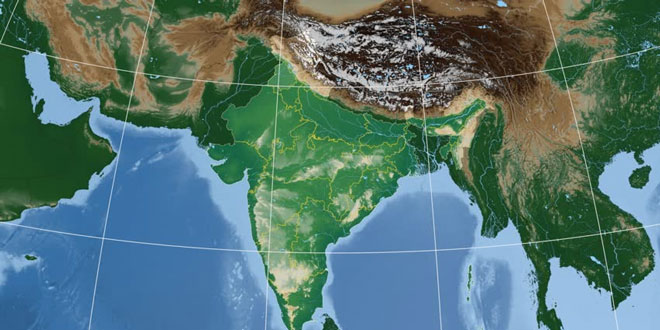Question: Distinguish between the Himadri, the Shiwalik, the Himachal.
Answer: Himadri:
- It is the northern most mountain ranges of Himalayas.
- Snow covered mountain peaks are common here.
- It is also known as greater Himalayas.
- Kanchenjunga is the highest in the Indian Himalayas.
Shiwalik:
- It is the southern most mountain ranges of Himalayas.
- Land slides are common here.
- It is also known as outer Himalayas.
- For Eg: Garo Khasi, Indian hills.
Himachal:
- Himachal lies between greater Himalayas in the north and Shiwalik in the south.
- It is also known as lesser Himalayas.
- The Pir-Panjal and the Dhaula Dhar are the mountain ranges in Himalayas.
- Hill stations such as Shimla, Kullu, Manali are situated in these mountain ranges.
Question: Explain the main features of the peninsular plateaus.
Answer:
- The peninsular plateaus are located towards the south of northern plains.
- It is roughly triangular in shape.
- It is the oldest structure of the Indian Subcontinent.
- The average height of the plateaus ranges from 600 m to 900 m and the slope is from west to east.
- The plateaus are made up of igneous and metamorphic rocks.
- They have on undulating surface with low hills and rounded tops.
- The Narmada river divides the entire plateaus into 2 parts the central Highlands and the deccan plateau.
Question: Compare the rivers of the Deccan plateaus with those of the Himalayas.
Answer: Rivers of the Deccan plateau:
- The river originates from central highlands.
- These rivers are rain fed and therefore they are seasonal.
- For Eg: Godawari, Krishna, Kaveri.
Himalayan Rivers:
- The rivers originates from the Himalayas.
- These rivers are snow fed as well as rain fed and thus perennial.
- For Eg- Indus, Ganga, Yamuna and Brahmputra.
 Class Notes NCERT Solutions for CBSE Students
Class Notes NCERT Solutions for CBSE Students



One comment
Pingback: IBEX India 2021: International Banking Expo, Mumbai - World Exhibitions